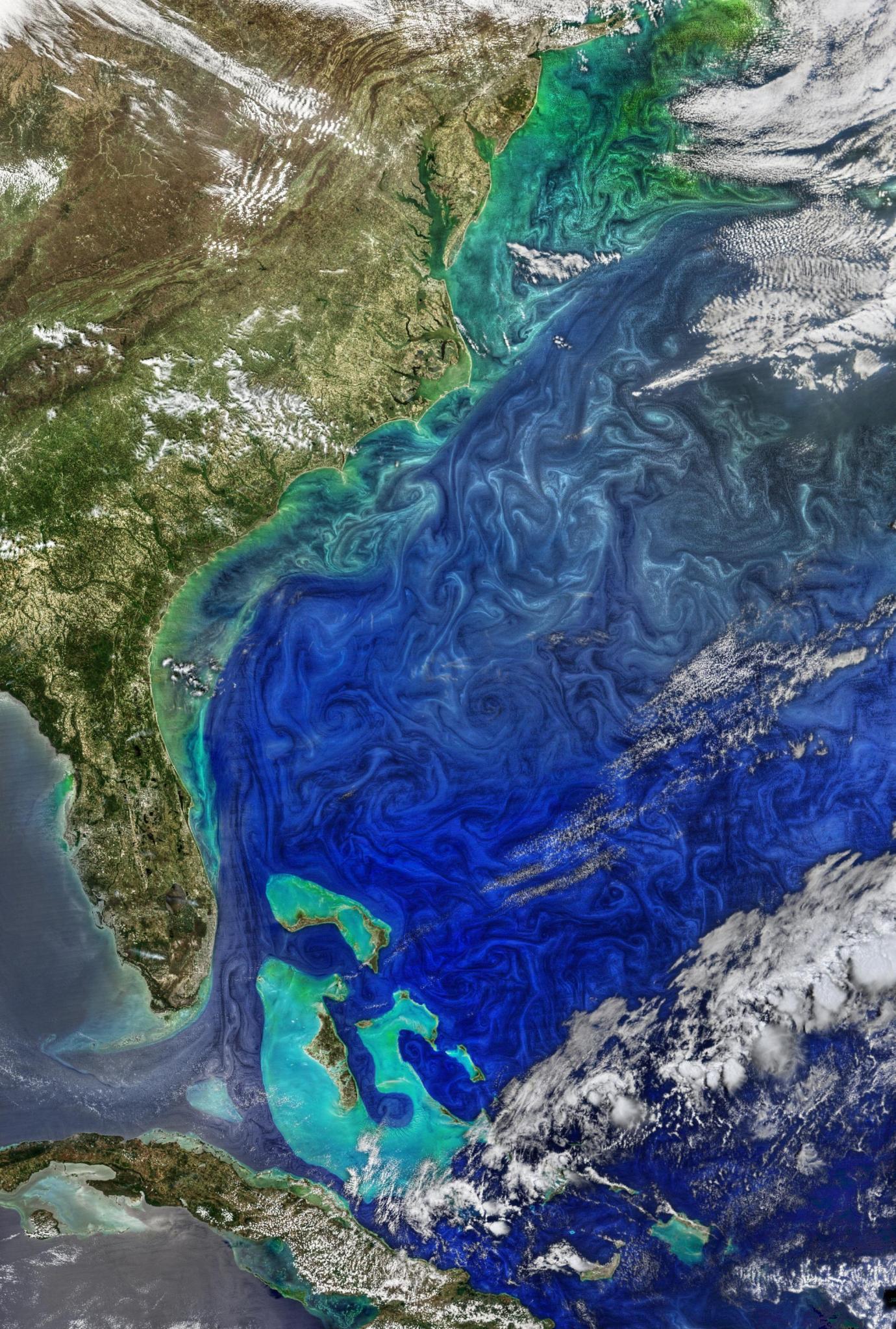Linking ocean circulation and riverine carbon flux
Oceanic overturning circulation transports water globally via the ocean’s surface and deep-water currents. This dynamic flow plays a significant role in the redistribution of carbon and heat across the ocean, as well as in the uptake of CO2 from the atmosphere. Rivers link the land and ocean, but riverine input of carbon-rich waters to the ocean is not well constrained: new research shows that global carbon flux models may underestimate the amount of carbon that is transported by the ocean and rivers by 20-100%. This new finding may reshape the way scientists think about land-based carbon storage, reducing the overall role it may play in Earth’s global carbon cycle.
Data Sources: Coupled Model Intercomparison Project version 5 Earth System Model
Publications
DeVries, T., Holzer, M. and Primeau, F., 2017. Recent increase in oceanic carbon uptake driven by weaker upper-ocean overturning. Nature, 542(7640), p.215. doi:10.1038/nature21068
Resplandy, L., Keeling, R.F., Rödenbeck, C., Stephens, B.B., Khatiwala, S., Rodgers, K.B., Long, M.C., Bopp, L. and Tans, P.P., 2018. Revision of global carbon fluxes based on a reassessment of oceanic and riverine carbon transport. Nature Geoscience, 11(7), p.504. https://doi.org/10.1038/s41561-018-0151-3
Zhai, P., Rodgers, K. B., Griffies, S. M., Slater, R. D., Iudicone, D., Sarmiento, J. L., & Resplandy, L. (2017). Mechanistic drivers of reemergence of anthropogenic carbon in the Equatorial Pacific. Geophysical Research Letters, 44, 9433–9439. https://doi.org/10.1002/2017GL073758
< Previous Discovery | Next Discovery >
< Back to: A Year in Review































